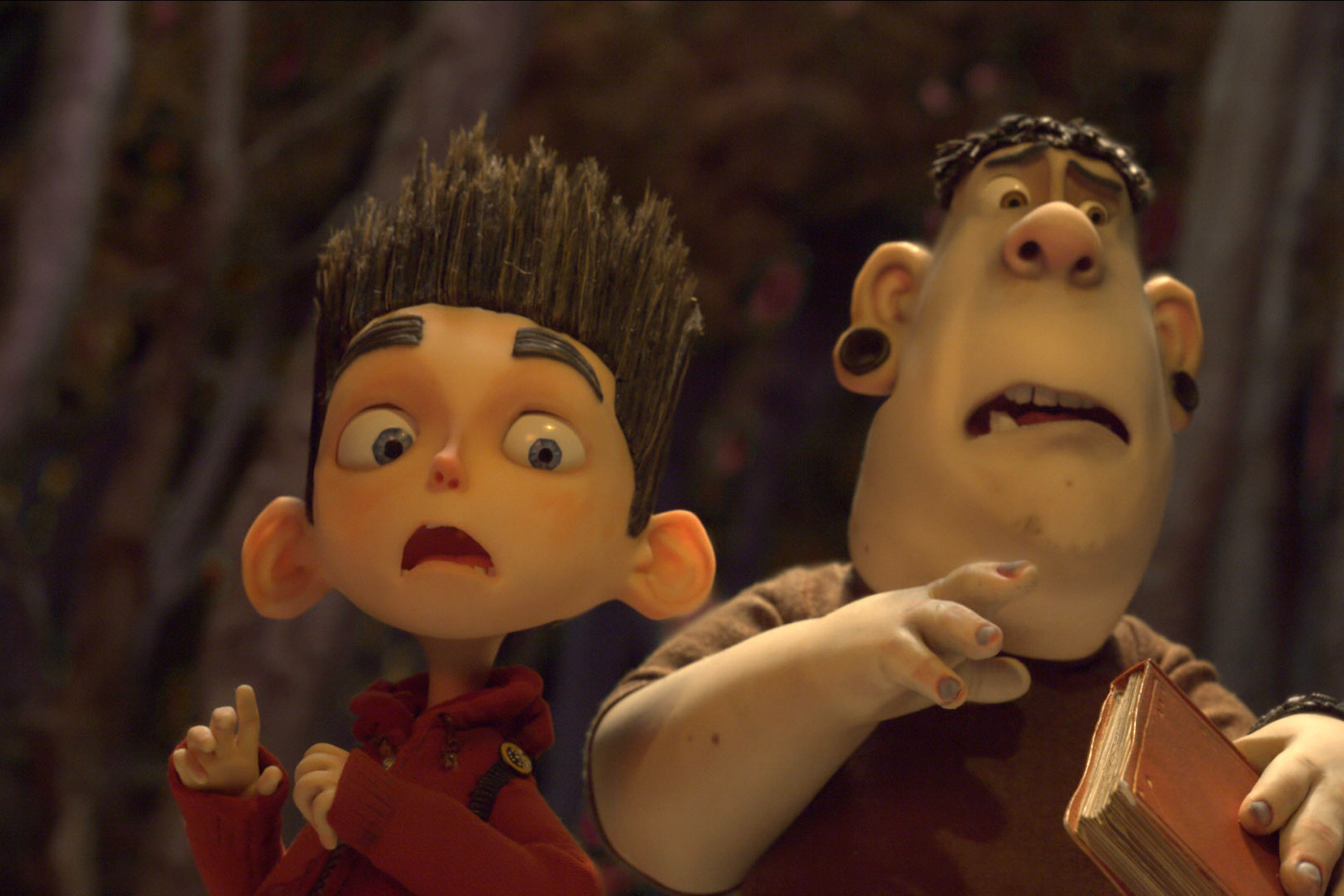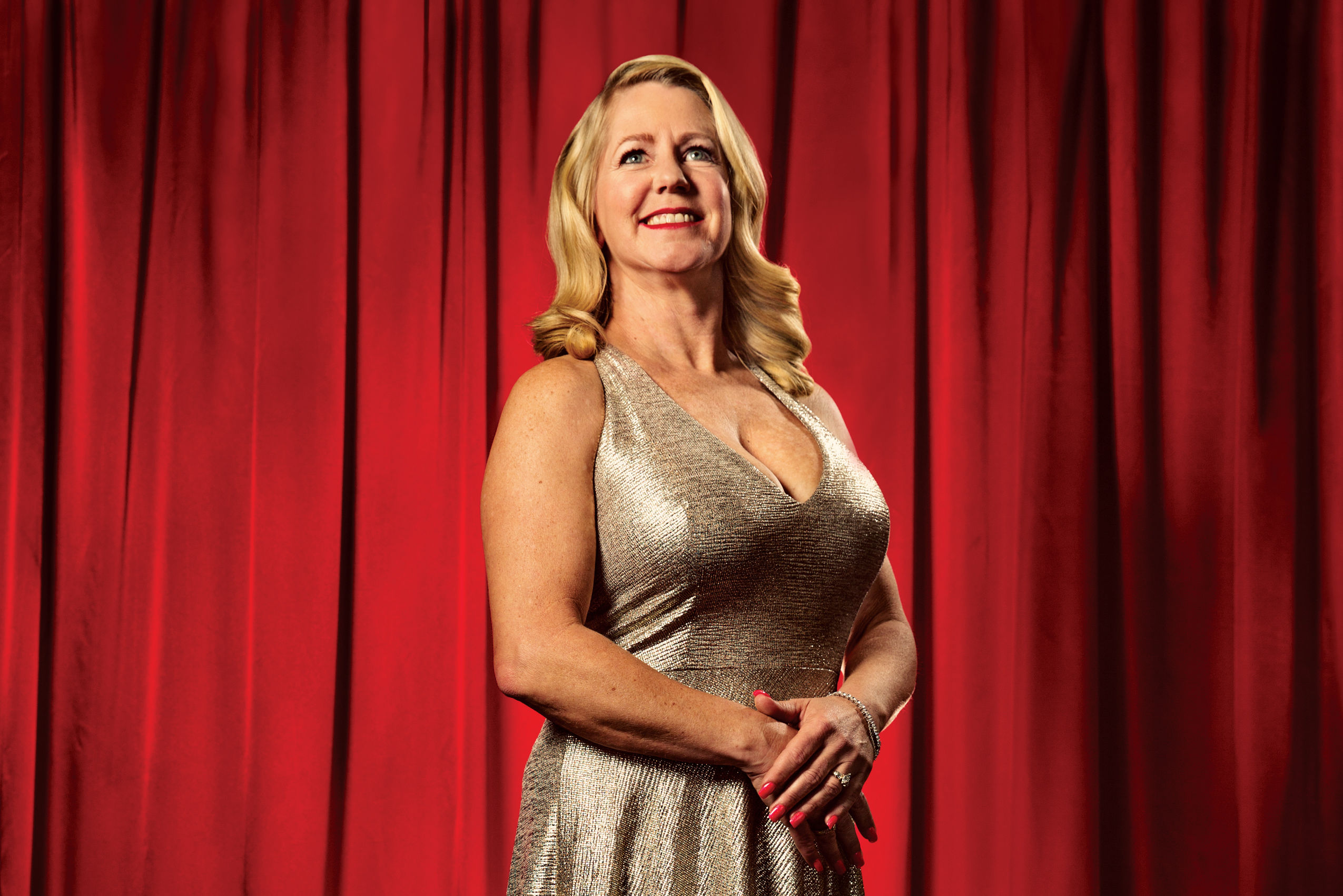
Tonya Harding Is Back—on the Ice, and on the Silver Screen
Tonya Harding is skating again.
On a fall morning at Mountain View Ice Arena, a rink in Vancouver, Washington, the five-foot-one Harding—who, half her life ago, won the US National Championships, twice, and then had some other stuff happen, which we’ll get to—swaps her usual jeans and boots for sparkly black leggings from the Walmart kids’ section. She strides onto the ice, quickly becoming a speeding blond blur.
The double toe loops and salchows she delivers in her workout would be dazzling for anyone. But performed by someone who hasn’t skated regularly in the past decade, someone a few weeks away from her 47th birthday, someone who’d had food poisoning over the weekend from some iffy chicken parm, they defy all logic.
The rink playlist—Ed Sheeran, One Direction, Alicia Keys—must have been picked by the kids who drift on the ice around her, fellow students of Dody Teachman, the coach Harding reenlisted last year to help her up her game. (Keys’s “Girl on Fire,” though, is kind of perfect.) Harding, her friend Erica Manary observes as we sit in the stands above the ice, might prefer Tone-Loc or Sir Mix-a-Lot—artists who hit the charts in the late ’80s and early ’90s. That was when Harding, who grew up on Portland’s eastern and southern urban fringes, vied to be the best figure skater in the world. The black scrunchie in her hair is a relic of that era (she brought extra, she says, for the photo shoot to follow). But, as she announces with a laugh several hours later, “at least I don’t have those ’80s bangs anymore!”
Oregon’s most famous solo athlete ever—sorry, Pre—remains a powerhouse in middle age. As she springs up after tightening a lace and launches into the next sequence on the ice, it’s easy to recall the glory days when, as Teachman remembers, “she would jump for jump match the guys.”
“She’s solid muscle,” Manary, an ICU nurse, tells me as we watch Harding power through jumps. “Her body is just not like other people’s.”
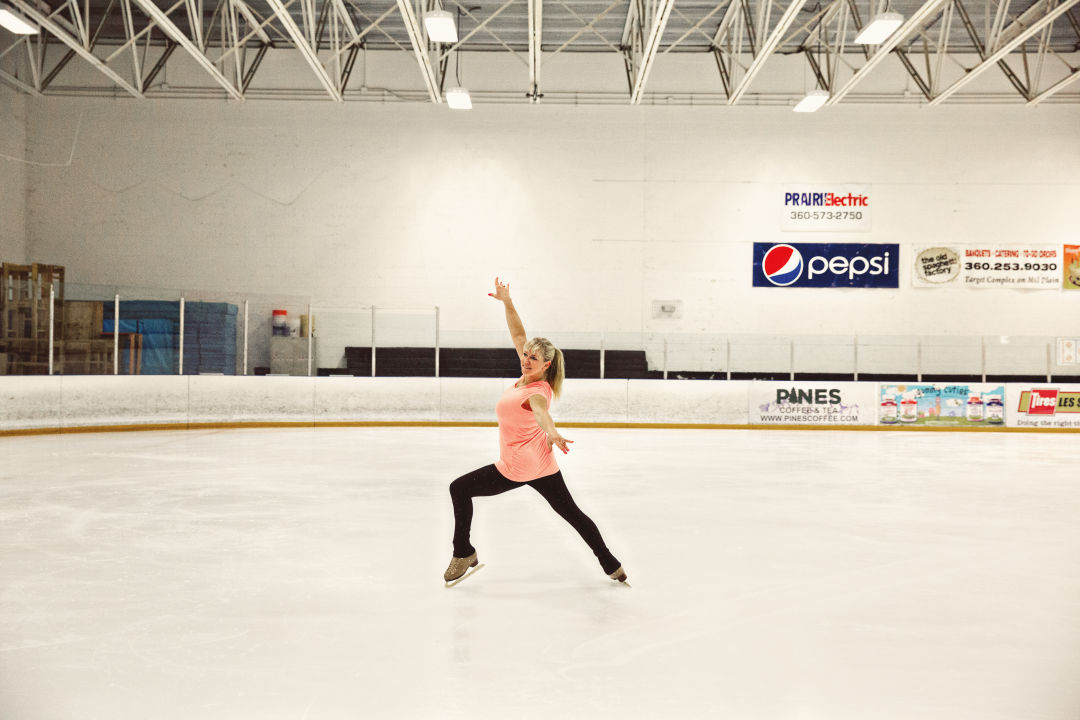
Harding in workout mode at Mountain View Ice Arena
Image: Holly Andres
Harding says her return to the rink is for her fans: “all the people who stood by me through all of these years,” as she puts it. “The only things I can give back to them is a few somethings to remind them that I was once one of the best.”
Manary says she’s not sure if her friend is back on the ice simply because it makes her happy, or if it might have something to do with the new movie I, Tonya, which opened in December. Australian Margot Robbie plays the Portland native, and there’s already Oscar buzz for both Robbie and Allison Janney—who won four Emmys for The West Wing—as Harding’s mother, a woman who once proudly claimed her constant criticism made her daughter a champion. (Harding is no longer in touch with her.)
Obviously, I, Tonya isn’t just a movie about some figure skater. The film’s promotional material notes that it’s based on an “insane true story.” And Manary, fresh off a night shift, stayed awake to be on hand when I talk to her friend; Harding, she explains, can be suspicious of the press.
So, yes. That.
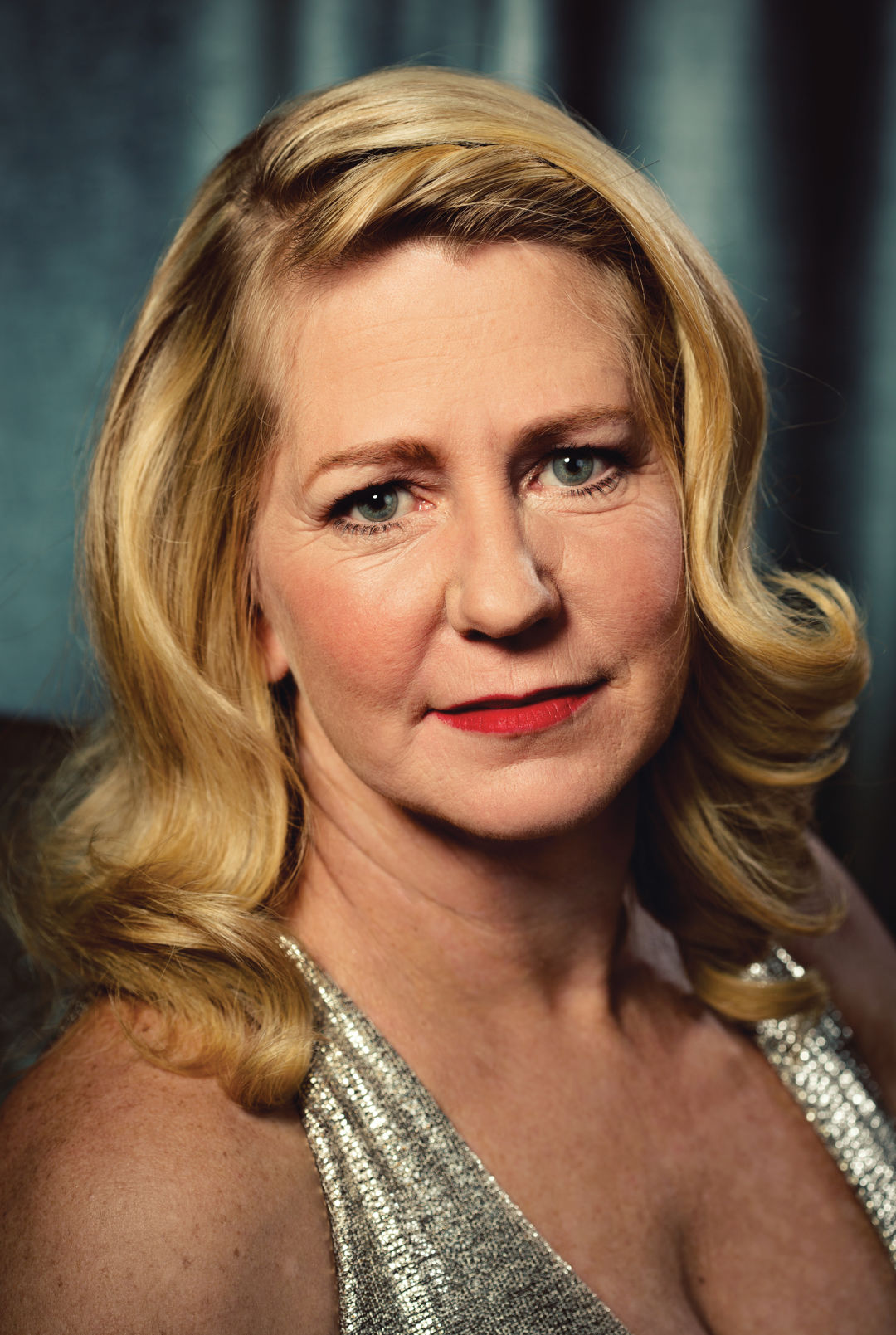
Image: Holly Andres
You might barely (but probably don’t) remember Rosalynn Sumners, Jill Trenary, Nicole Bobek, and other American figure skaters who won national titles before Michelle Kwan seized the top spot for close to a decade. But you know Tonya Harding. Not just because she medaled in the top four (fourth-place gets pewter) at nationals five times between 1989 and 1994, taking gold in 1991 and 1994. Not just because she was the first American woman and second woman ever, after Japan’s Midori Ito, to land a triple Axel in competition, at the ’91 US Championships.
No—you know Tonya Harding because in January 1994, a man hired by Harding’s semi-estranged husband and his wannabe-bodyguard friend assaulted rival skater Nancy Kerrigan, hitting her above the knee with a retractable baton so she couldn’t compete in nationals. (Kerrigan was named to the Olympic team anyway, along with US champ Harding. Runner-up Michelle Kwan would have to wait.) As the saga unraveled, how much Harding knew, and when, became the subject of fierce speculation, with some of the players claiming she’d been in on it from the start.
Just a few months before OJ Simpson’s white Bronco chase, the resulting media storm made Portland and Clackamas a stage for the early days of media’s 24-hour scandal cycle: the story TV could not resist or leave alone, the story somehow worth pursuing through parking lots, porches, driveways, coffee shops, the courthouse, the federal building downtown. At one point Harding answered a reporter’s knock on the door and begged to just be allowed to sleep.
CBS, the Olympics network that year, put one of its evening news anchors, the renowned Connie Chung, on the case.
“I was mortified,” Chung says now, recalling the assignment. “We were just at the White House for the historic Palestinian-Israeli peace accords. I interviewed President Clinton regarding NAFTA—and suddenly I’m on a plane to Portland.” She remembers news teams from England, Sweden, and Japan all jostling for the best shot. Dangling a microphone over the railing at the Clackamas Town Center’s rink to try to get Harding’s attention, she thought to herself, “Would Walter Cronkite do this?”
Chung believes now that the furor around Harding and the Kerrigan attack changed television, and journalism, and not for the better. “It was the beginning of what I would call the world of hype,” the broadcast legend says, “and the feeding frenzy—glomming on to an unworthy story.”
The local media joined in, with sports-section mentions in the Oregonian giving way to such front-page headlines as “Tonya’s Practice Session Full of Disappointments” and columnists’ calls for her to withdraw. (In future years other stories would chronicle weight gain, bad relationships, evictions, and a DUII.)
Harding became the most scrutinized athlete at the Lillehammer Olympic Games in February. On the ice, she famously broke down mid-routine with a broken boot lace and eventually finished eighth. (Kerrigan won silver.) Eventually, she pleaded guilty to conspiring to hinder prosecution. That plea bargain was struck after pages were found in some trash bags, dumped at Northwest Portland’s Dockside Saloon, that included notes about where Kerrigan practiced—notes the DA said were in Harding’s handwriting. Her ex-husband, the bodyguard, the baton wielder, and the getaway driver all served time. Harding was sentenced to probation and community service, fined $160,000, and banned from competing or sanctioned coaching.
At that point, Tonya Harding mostly slipped out of the news cycle and into the realm of half-remembered causes célèbres. Margot Robbie, cast in the title role for I, Tonya, reportedly thought the whole story was fiction when she first read the screenplay. (In her defense, Robbie was born in 1990 and grew up in Australia.)
The assault on Kerrigan was murky, to say the least. As far as Harding was concerned, the American public was ready to assume the worst—for reasons that now seem obvious. Even before the attack, Harding and Kerrigan had been typecast, in part to generate TV ratings.
With the end of the Cold War plot line—American spunk vs. Eastern European sports machines—winter sports needed new tension. “CBS was hell-bent to get good coverage,” Chung recalls. “They had paid a pretty penny for the Winter Games.”
In the narrative that took shape, Harding filled the role of the tough kid from the wrong side of the tracks: the asthmatic smoker, the divorcee from a broken home, the high school dropout. (Harding, who calls herself “more streetwise than bookwise” and later got her GED, says Milwaukie High told her to choose between school and skating. Many elite athletes stray from a traditional school timeline, especially in international sports; rarely are they called dropouts.) Descriptions of her on the ice also called attention to rough edges, repeating that she was not graceful, all brawn.
The media portrayed Kerrigan as Harding’s convenient foil: a classy New England girl-next-door (her upbringing was, in reality, far from wealthy), with Katharine Hepburn-esque stature (reality: she’s five-foot-four), her monochromatic skating outfits praised as tasteful and elegant.
The storyline had real-world financial implications, with the Olympic ban on professional (i.e., paid) athletes recently lifted. Kerrigan was in a 1993 chicken noodle soup commercial for Campbell’s, one of her many sponsors. Harding landed some commercial appearances, too, but fewer than might be expected for a US champion. The December 1993 issue of Harding’s stapled-together fan-club newsletter, The Skater—in which rotating writers would often call out perceived injustices with headlines like “Pro-Am Snubs Tonya” and “Tonya Gypped in Japan”—claimed Kerrigan enjoyed “media favoritism and Eastern Seaboard hype.”
So when Kerrigan went down wounded after a workout in Detroit, her wails of “Why? Why?” captured on soon-ubiquitous raw footage, the world was primed for what Chung calls “the perfect fairy tale,” complete with themes of loss, hate, envy, and betrayal—the stuff of Shakespeare or, Chung adds with a laugh, an “extremely bad movie.”
The saga was made into a bad TV movie in 1994. But I, Tonya, from the director of Lars and the Real Girl, is a blast. Robbie nails both the 40-something Harding, giving a kitchen-table interview, and the young champion who pings between her mother’s constant put-downs and an anger-filled marriage. Told as flashes of memory, the dark comedy is also a time capsule of rotary phones, Dire Straits songs, and the fury felt when your parents accidentally record over the VHS tape with your favorite episode of Star Trek on it. It fails to capture Portland, though, and will make locals miss the days when familiar-looking British Columbia stood in for the city instead of I, Tonya’s Georgia locations. The trees are all wrong.
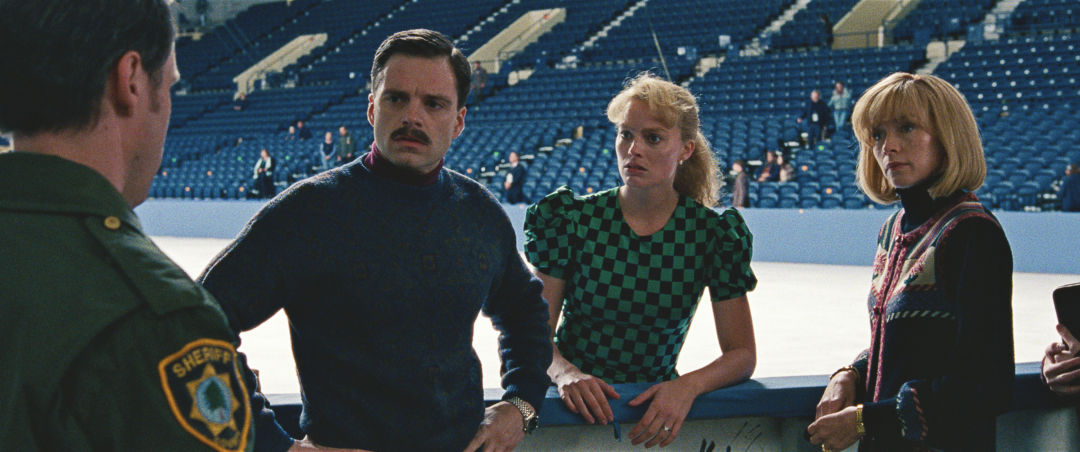
I, Tonya’s Sebastian Stan, Margot Robbie, and Julianne Nicholson as Gillooly, Harding, and Rawlinson
Image: Courtesy Neon
In the parking lot the Mountain View rink shares with a church next door, Tonya Harding is jump-starting our style editor’s car, her pink nails perfect against the red and black clamps.
“I’m a cowgirl and a redneck,” she tells us shortly after we arrive (car successfully started) for our photo shoot at the Royal Oaks Country Club, where Harding, her stomach still sensitive from the weekend’s food poisoning, orders crème brûlée. “I have a 6-year-old. I chop the wood. I hunt. I fish.” Her husband might have bagged their last elk, but Harding, a bowhunter, was the one who’d tracked it.
Harding lives in Washington now, about an hour from Portland. “The farthest I go most of the time is the rink, and if I have to go to Bi-Mart or the fabric store, the outdoor store or the hunting store,” she says. She doesn’t come into Portland much, citing the traffic (though she appreciates that gridlock gives her a chance to listen to Lars Larson), the violence, and the crush of people in the city. She’d rather be out in the woods.
“Everything that I’ve been through, I really don’t like crowds so much,” she says. “I’d rather go up into the hills, and then come back and be home.”
Born in 1970—the same year as Nick Offerman and Melissa McCarthy, Melania Trump and Ted Cruz—Harding first scooted onto the ice at Lloyd Center when she was 3. Within a year, she was the youngest pupil of Diane Rawlinson at a rink on Jantzen Beach. Her family moved frequently, and Harding often switched schools. Skating was her constant. Her mother was once witnessed hitting her with a hairbrush in a rink bathroom—one of many violent episodes depicted in I, Tonya. “My dad was my best friend in the whole world,” Harding says. “He was my everything.”
“She didn’t do the ballet classes, she didn’t do the cross training. Her method of cross training was she’d go out and go hunting with her dad,” says Teachman, once a secondary coach of Harding’s and her main coach for some of the early ’90s. While other ambitious competitive youth skaters boarded near specialized training facilities, Harding set up shop at Clackamas Town Center. Her nascent fan club met by the mall’s food court to watch her practice. Their fanzine noted Harding sometimes did hair and nails for fans to make extra money. She sewed many of her own costumes, not always to the US Figure Skating Association’s tastes. Heavy on flair, their excess of sequins at times suggested a Bedazzler run amok; panels of skin-colored material simulated very plunging necklines. (Today Harding says she likes a classy look that leaves something to the imagination—Grace Kelly, Audrey Hepburn, Julie Andrews in The Princess Diaries.)
After her parents split, though, it was just her mom, then the husband Harding married at 19, Jeff Gillooly. In The Price of Gold, a 2014 ESPN documentary in the sports network’s 30 for 30 series, a friend speculated Gillooly saw Harding as a “meal ticket” and tried to exert the same control over her career her mother had.
“She had a lot of people telling her what to do, for a long time, and I think that she could be pretty stubborn,” Teachman says. “The US Figure Skating Association, as a body, they do a lot for their skaters. But they are also very involved in what’s going on. For some people that’s OK. For other people....”
Harding remembers the association as being about money, not merit. “Everyone should wear a plain black skating outfit and just go,” she says. “It should be done on your skating ability, not what you look like. Not what your home life is like. Not what you do off the ice. None of that should matter. But unfortunately they don’t care really about what you do on the ice as long as you’re good off the ice, too.”
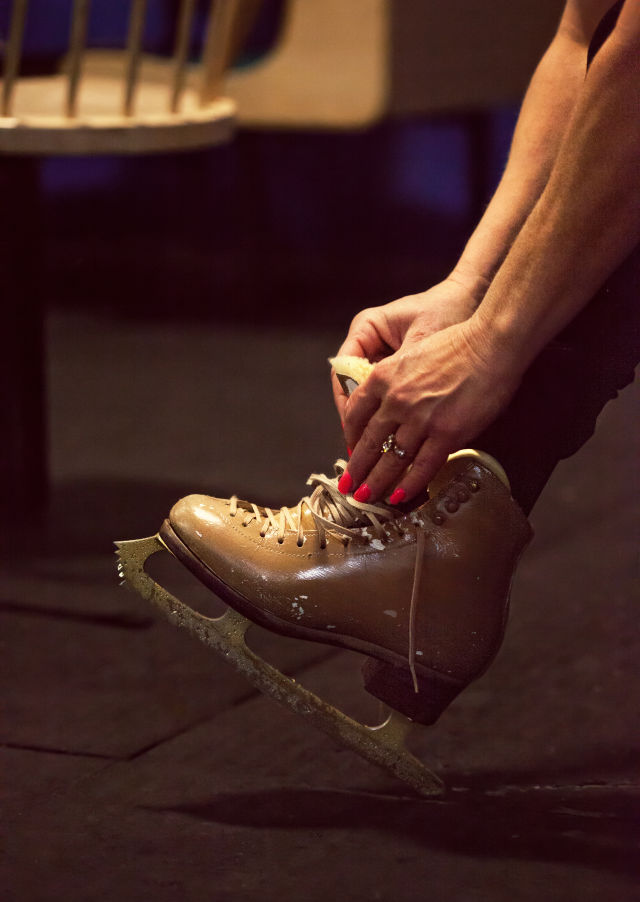
Harding at the rink
Image: Holly Andres
After the association banned her, Harding would struggle financially, untouchable to sponsors. She’s worked various other jobs, landed short-term gigs on the tarnished-celebrity circuit, and entertained the occasional reality-show proposal. Not much panned out. Harding’s manager negotiated some payment from the I, Tonya production, but Harding says she worries about affording health insurance for her family.
One night in 2010, Harding returned from a Los Angeles taping of truTv’s World’s Dumbest series. On the show—which during its run also featured fellow Celebrity Boxing alums Todd Bridges, Danny Bonaduce, and the guy who played Screech on Saved by the Bell—she delivered commentary on videos of embarrassing acts. (Harding recounts a recent awkward “don’t I know you from somewhere?” moment with a neighborhood teenager. She thought, “Oh, here we go again”—only to realize the starstruck kid recognized her from World’s Dumbest.)
“I was all cute: my hair was done, and my makeup,” she says. She met friends for karaoke. (She veers country—LeAnn Rimes’s “Blue,” Carrie Underwood’s “Before He Cheats”—but can also rock a ballad. “If you have the right equipment I can actually sound good,” she says.) Soon a man named Joe took the mic and belted a perfect rendition of “Great Balls of Fire.” Harding grabbed a seat next to him.
“I think I said: Are you not married, or have a girlfriend?” she recalls. “Do you have a job?” He worked in HVAC. “Do you have your own rig?” Now Harding is laughing as she remembers. “Do you like hunting, fishing? I knew. Right away.” She organized Joe’s birthday party a few weeks later, and got down on one knee to propose to him in front of the guests. Their regular karaoke jockey did the music for their wedding reception.
Harding gets out her phone to play me Kid Rock’s “Only God Knows Why,” which Joe suggested could be her personal anthem. “Everybody knows my name / They say it way out loud / A lot of folks fuck with me / It’s hard to hang out in crowds.”
She says she’d been told over the years she probably couldn’t get pregnant, whether due to falls or fitness regimens or asthma medications. Then came their son.
“Being pregnant was a very big shock,” she says. “But it turns out that that was the best thing the Lord could have given me.” Now 6, their son has her athletic build. (“Literally, his little butt, I’m sorry, but it’s shaped just like mine,” Harding says with a laugh.) “He’s energetic, smart, funny, and passionate about things, and very loving,” she gushes, sounding like any proud mother. He loves science, swimming, funny cat videos, Minecraft, and Octonauts. “He knows more about fish than I do,” Mom says. She’s excited about first grade, though she says they’d also considered homeschooling because she wasn’t sure how she felt about all the required vaccines for public school. Joe did the research, though, and assured her it would be OK.
“I want him to grow up saying please and thank you,” Harding says of her son. “That doesn’t always happen, of course, but I just want him to be the best that he can be, and whatever he chooses to do when he grows up is perfectly fine.”
Harding left Portland. In another sense, Tonya Harding’s Portland no longer really exists. Clackamas Town Center’s ice rink disappeared in 2003, amid the mall’s decade-long makeover. The old rink at Jantzen Beach is now a location of bankrupt chain Toys R Us. Lloyd Center’s ice has shrunken as the admission price has gone up and up. Depending on the day, it can run $20 per person for skate rental and ice time. Maybe it’s all a good thing: Harding has no desire to relive the old days. The mall where her fan club once gathered is also where she was later hounded, booed, and heckled.
“I left Portland because they considered me their hometown girl,” she says. “And then, when this all happened, some people decided not to believe what was going on and threw me to the wolves. Portland became the wolf.”
“It happened,” she adds. “I grew up, and now every day I try not to focus on my past because there’s nothing you can do about it. You just let it go, and you just go forward with your life and you make the best of it. I try to be a good role model for my son in every way.”
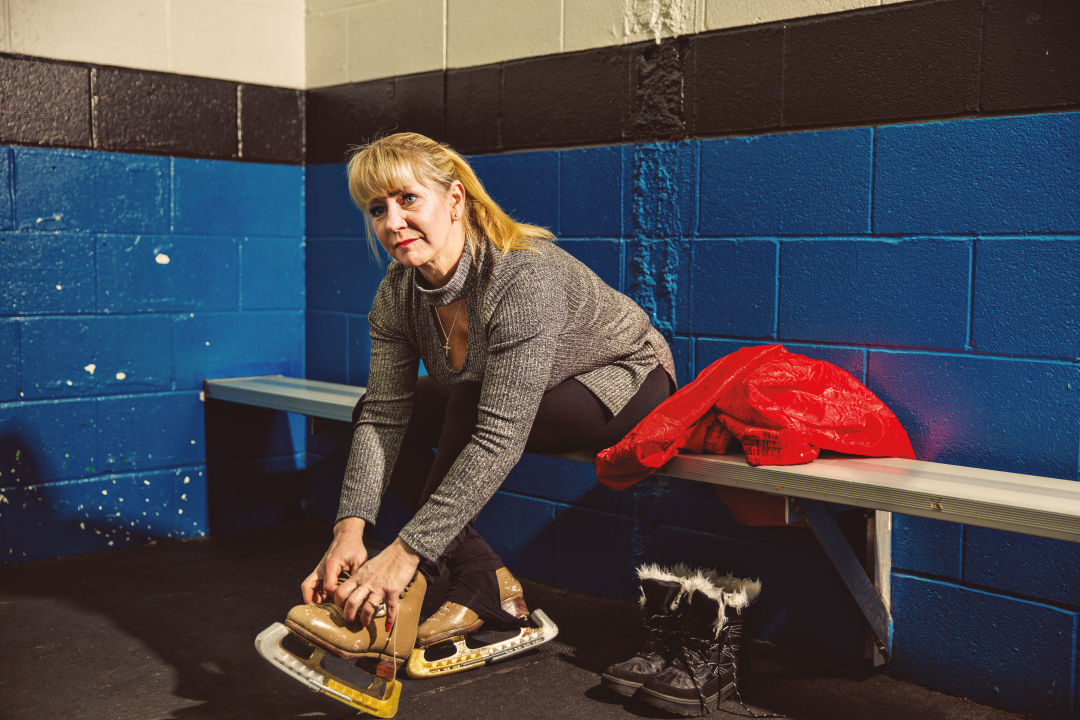
Harding laces up her skates at Mountain View Ice Arena.
Image: Holly Andres
Joe and their son aren’t in I, Tonya, which mostly leaves off after 1994. There was some talk of a cameo for her, but the idea was dropped. Viewers get to meet versions of Rawlinson, Teachman, Gillooly, the men who were hired for the attack (the portrayal of the crime itself has its own “world’s dumbest” theme), other skaters and media personalities (including Chung, in real archival footage), and, of course, Harding herself.
“Now people will see what I had to go through,” she says. Other documentaries, dramatizations, and ripped-from-the-headlines, true-crime-style books, many produced shortly after the incidents of 1994, were ridiculous to her, repeating stereotypes and misconceptions. “30 for 30 showed me in a different light, and people got to hear some of my side,” she says of the ESPN documentary, which she saw as a turning point. I, Tonya, though: “It was done so correctly. There was only a couple of little things that were not correct—like my mother did not stand on the ice smoking. But the rest—Allison Janney hit it out of the ballpark on my mother.”
“When I said it, you know, that all these bad things were happening, no one believed me,” Harding says. “And now they’re actually going to see it [and see] why I was so tough. Why I always felt like I had to prove myself to be better than my mother—that was all it was about. Because I will never be like that. The type of person, the type of mother, she should have never had children.”
Movie aside, Harding hasn’t gone Hollywood. She’s still with her longtime manager, who’s mostly retired and sends emails from an AOL address in the Comic Sans font. Her publicist, who was part of the writing team behind the fan-made song “It’s Tonya’s Turn,” serves as more of a mother figure to her than any relative. Harding says a gal who sews costumes for skaters at the rink made her red-carpet dress for the premiere in LA—with a bright orange camo panel that flashed as she walked. When we met, she didn’t know how the rest of the dress would end up, but she knew that.
“Anything camo, because that’s who I am.”

Image: Holly Andres



